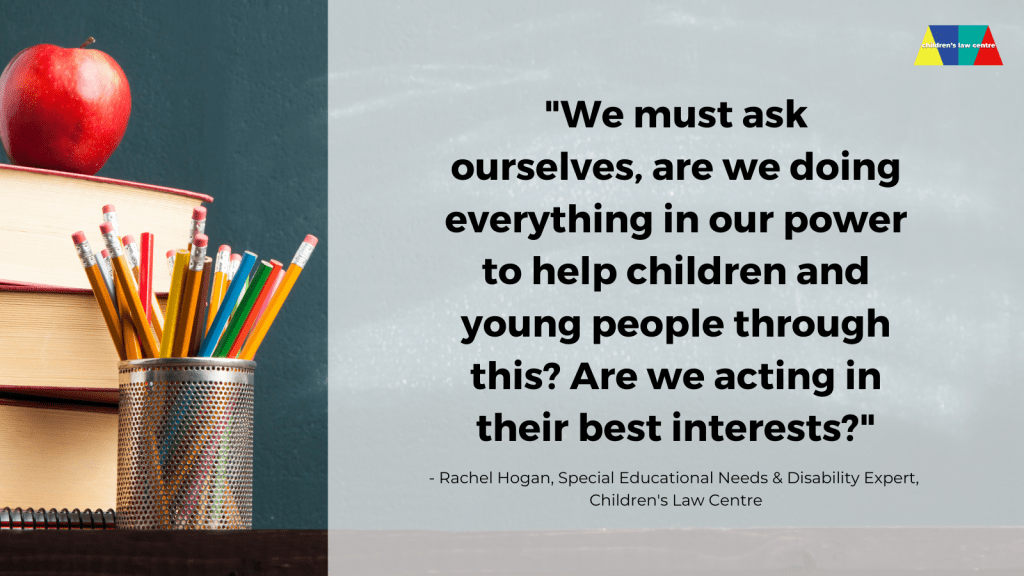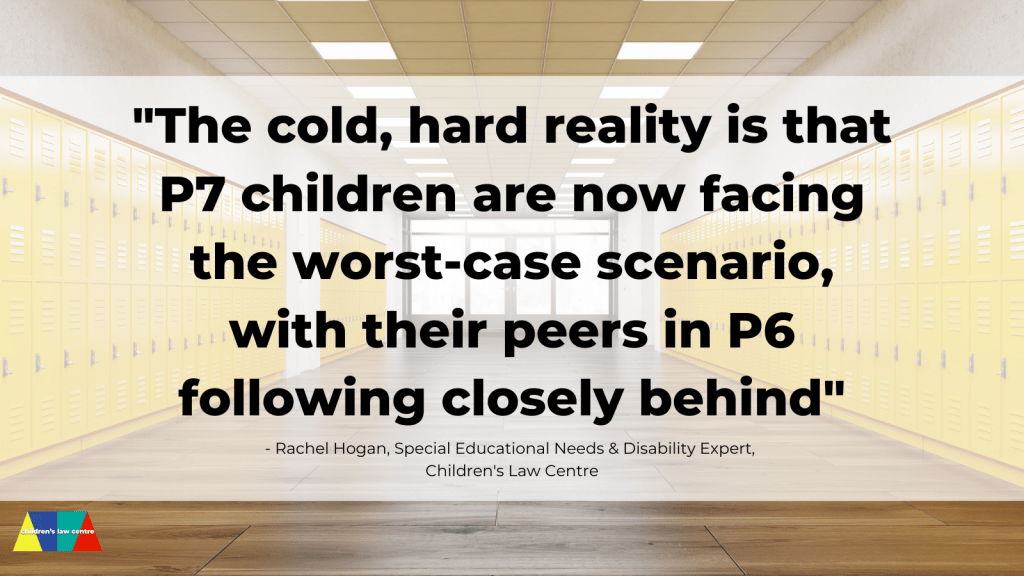Children Facing Worst Case Scenario Over Post-Primary Admissions
01 February 2021
The Education Authority has published admissions criteria for children transferring from primary to post-primary education. This comes after the late cancellation of common entrance assessments. The transfer process now rests on a reliance, by the Minister of Education, upon schools’ Boards of Governors to develop and submit alternative criteria, without accounting for the adverse impacts of the ongoing emergency.

We cannot lose sight of the stress facing children this year. In my work at the Children’s Law Centre, I see every day the disproportionate impact that COVID-19 and policy responses to tackle the pandemic are having on groups of children. The stress and anxiety brought on by post-primary transfer in any normal year has been massively increased in the face of this year’s complexities. Then, set this beside the warnings from child health experts across the UK, including NI’s mental health champion, describing children’s welfare as “a national emergency”.
We must ask ourselves, are we doing everything in our power to help children and young people through this? Are we acting in their best interests?
Children who have been going through this constantly shifting and mentally draining process now face an array of alternative criteria, but will it end the uncertainty? The real concern now is that this is just the beginning of a new wave of stress and anxiety. This is simply not an acceptable situation for ten and eleven year olds, or their parents, to have to face when resilience is already drained.
The cold, hard reality is that P7 children are now facing the worst-case scenario, with their peers in P6 following closely behind. In a 2016 circular that was reissued in October of last year, the Department of Education stated that “all Boards of Governors are required by law to have regard to” recommendations on criteria, warning that “if a school fails to follow guidance and does not have sufficient reason for doing so the school may not be indemnified by the Education Authority if legal proceedings are initiated against the school”.
Despite these warnings, it became all too predictable that without active direction from the Department to support schools through this difficult year, children would face a wide array of different criteria, some on the ‘recommended’ list and some on the ‘not recommended’ list. Looking at schools who self-published early, that was exactly the picture emerging. Some schools adhered to the guidance, some clearly not. Ignoring guidance on non-academic criteria, or using unreasonable or unfair academic criteria, is likely to lead to legal action.
Children are now faced with criteria that differ from school to school and a long wait until they find out their fate in June. Add this to the possible prospect of a proliferation of litigation and we could see even more disruption to the transfer timetable.

That is why the Children’s Law Centre, along with 24 other organisations, wrote to the Education Minister on 13 January. In the letter we requested “that the Department of Education use its powers of Direction held under section 38(3)(a) of the Coronavirus Act 2020, along with Paragraph 14(4) of Part 3 of Schedule 17 and/or Article 101 of the Education and Libraries (NI) Order 1986 to direct school Boards of Governors of all grammar schools on suitable contingency admissions criteria for this academic year to ensure they do not unlawfully discriminate against any group of children and to consult with relevant stakeholders on what those admissions criteria should be.”
Children are facing an exceptional set of circumstances. The Department of Education holds the power to direct a fair and robust solution, in the best interests of children, that would enable the continuity of education and avoid disruption of the transfer timetable. Instead, even at this stage, it looks like children face even more uncertainty ahead.
The detrimental impact this is having on young children is playing out in front of our eyes. They are left carrying the cost of government inaction.
Rachel Hogan
Special Educational Needs and Disability Expert, Children’s Law Centre
Notes:
- The Department of Education circular containing admissions criteria guidance can be found here.
- A copy of the letter, sent by the Children’s Law Centre on 13 January, can be found here.
- The Children’s Law Centre is an independent charitable organisation established in September 1997 which works towards a society where all children can participate, are valued, have their rights respected and guaranteed without discrimination and every child can achieve their full potential. The organisation is founded on the principles enshrined in the United Nations Convention on the Rights of the Child.
- The Children’s Law Centre operates a dedicated free phone legal advice line for children and young people called CHALKY and provides legal information through an online platform known as ‘REE’ and legal advice through ‘REE Live Chat’ – https://childrenslawcentre.org.uk/clhexpert/.

